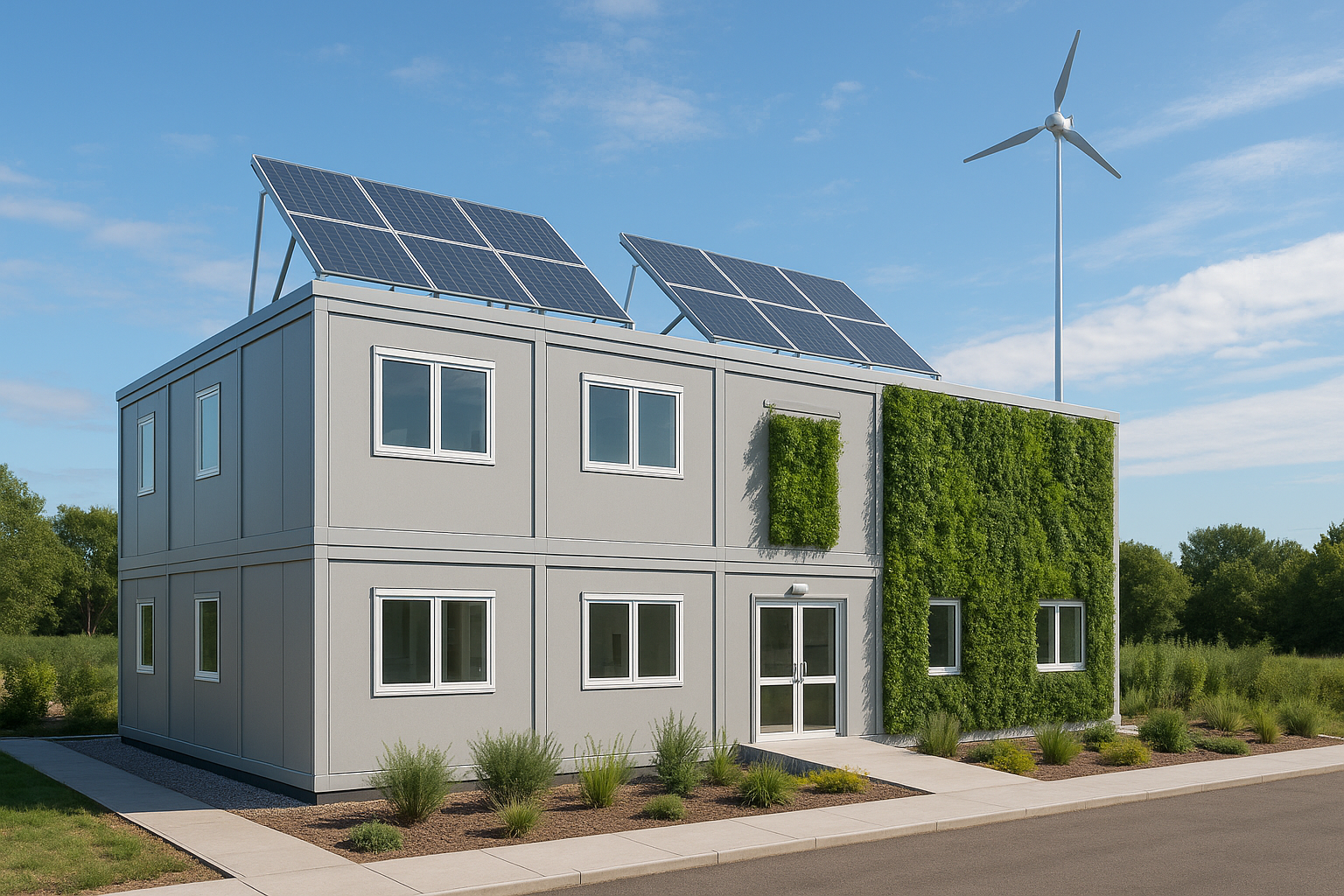In the construction world today, two big topics are getting a lot of attention: modular construction and decarbonisation. These terms may sound technical, but they are important for how we build things now and in the future, especially when it comes to modular healthcare buildings and other essential facilities.
In this article, we’ll explain what modular construction and decarbonisation mean, how they’re connected, and why they matter, especially for creating greener, more efficient buildings in the healthcare industry.
What is Modular Construction?
Modular construction is a modern building method where structures are built off-site in sections, called modules, then transported to the construction site and assembled. It’s a bit like building with LEGO blocks, but on a much larger and more advanced scale.
Each module is made in a controlled factory environment. Once the modules are completed, they’re delivered and put together to form a finished building. This process is faster and often more cost-effective than traditional construction methods.
One area where modular construction is especially useful is in healthcare. Modular healthcare buildings can be built quickly to respond to growing medical needs or emergencies, like during a pandemic. They are flexible, can be relocated, and meet the same standards as traditional hospital buildings.
What is Decarbonisation?
Decarbonisation means reducing the amount of carbon dioxide (CO₂) released into the atmosphere. Carbon dioxide is one of the main greenhouse gases that contribute to global warming and climate change.
In the construction industry, decarbonisation focuses on lowering carbon emissions during the building process and the lifetime of the building. This includes reducing:
- Embodied carbon – the carbon footprint of materials (like concrete and steel) and construction activities.
- Operational carbon – the emissions from running the building over time (like electricity for lights, heating, and cooling).
Decarbonisation is a big goal for governments and businesses worldwide. The idea is to build smarter and greener, without harming the environment. It’s all part of the move toward net-zero, where the amount of carbon released is balanced by actions that remove carbon from the atmosphere, like planting trees or using carbon capture technology.
How Modular Construction Helps Decarbonisation
So, how do these two ideas—modular construction and decarbonisation—work together?
Modular construction can actually support the decarbonisation process in several ways:
1. Less Waste
Building in factories allows for better control over materials. There’s less waste because materials are cut and used more efficiently. Any leftover materials can often be reused or recycled more easily in a factory setting than on a traditional building site.
2. Lower Emissions on Site
Since much of the work is done off-site, there are fewer workers, fewer deliveries, and less heavy machinery needed on the construction site. That means less noise, less traffic, and most importantly—lower carbon emissions.
3. Efficient Design
Modular buildings are often designed to be energy-efficient. Many modular healthcare buildings include insulation, ventilation, and lighting systems that reduce energy use and lower operational carbon emissions.
4. Use of Green Materials
Some modular construction companies now use sustainable or recycled materials that produce fewer emissions during manufacturing. This helps reduce embodied carbon right from the start.
5. Adaptability and Reuse
Modular buildings can be moved or reused for different purposes. Instead of tearing down a building and starting from scratch, parts of a modular building can be repurposed, saving materials and reducing waste.
Why Modular Healthcare Buildings Are Leading the Way
Hospitals and healthcare facilities have special needs. They need to be clean, safe, and functional—sometimes built in a hurry during emergencies. Modular healthcare buildings have proven to be a smart solution.
They’re fast to build, can be made with high-quality materials, and are easily expandable. But beyond speed and flexibility, these buildings can also play a key role in decarbonisation.
By using modular methods, healthcare providers can cut construction time, reduce emissions, and build with sustainability in mind. For example, a modular clinic can be built in weeks instead of months, with less disruption to the environment and nearby communities.
Many new modular healthcare buildings also include solar panels, energy-saving systems, and environmentally friendly materials, all helping the healthcare sector move toward net-zero goals.
Final Thoughts
Modular construction and decarbonisation might seem like complicated ideas, but they are actually part of a bigger plan to build smarter, cleaner, and faster. Together, they offer a path forward for industries like healthcare, where the need for quick and reliable buildings is high.
As climate change becomes more urgent, building in ways that reduce emissions is not just a good idea—it’s a must. And modular healthcare buildings show us that we don’t have to choose between speed, quality, and sustainability. We can have all three.
Whether you’re a builder, a healthcare provider, or just someone interested in how the world is changing, it’s clear that modular construction and decarbonisation are shaping the future of building, for the better.
